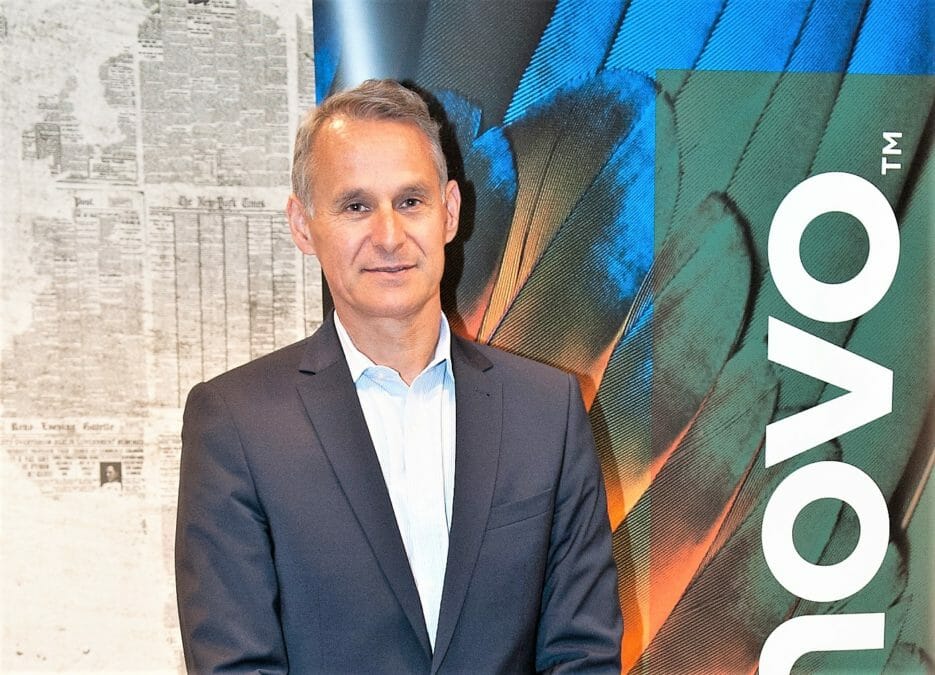|
|||
Information Age (IA): Prudential UK has made a huge commitment to improving how it interacts with customers. Can you give an overview of IT’s role in the company’s Customer Service Transformation (CST) project?
Jeremy Gray (JG): CST was very much a business-oriented vision around how to improve the customer experience and make it easier for customers to interact with us. Probably because we had these separate business units and because it’s a life and pensions company, we had a reasonable legacy estate.
Our problem was how to provide this improved customer experience when we’ve got all these different silos of technology. And solving that involved building an integration platform that could provide a customer service agent with a single view of all of our product holdings. Through that they can undertake any of 40 transactions and execute those as a ‘one and done’ process. So when the technology part of the project started, it was all about integrating our different contract engines. When selecting a vendor we looked at the market leaders – BEA, IBM, Microsoft. It was close but one of the reasons BEA impressed was that the integration between its technology and the systems we already had in place was better than some of its competitors. It was a better fit in our organisation.
|
||
IA: How do you measure the success of the project overall?
JG: Over a five year period we expect to achieve a 33% return on investment. But one of the main reasons we did it was to improve the customer experience and undoubtedly we did that. The metrics are very positive. We now can say with certainty that if you ring in you’ll get a very good consistent service. Because we virtualised our call centres, you’ll get through to a call centre in the shortest possible time and always direct to an agent, without having to go through phone menus, which is nowadays fairly unique. And that person isn’t just someone that hands you off to someone else; pretty much you get your enquiries dealt with, which is even more unusual!
IA: To enhance the customer experience, did you have to enhance the agent experience by changing the front-end of the call centre portal as well as the underlying architecture?
JG: Yes, there were significant interface changes. The call centre agents had all previously accessed their own division’s legacy front-end through a browser-based system. Interestingly, some of the older systems were sometimes faster, but to use those you had to have a huge amount of information in your head, such as all the transaction codes. So the front-end we’ve got now looks better, it’s easy to work, with things like transaction options appearing in a drop down box. We had to do a lot of usability testing to get it right. The position on the screen is critically important – get that wrong and people hate the system. But [even with the interface improvements] you have to make sure that it’s still fast, because if an agent is on the phone to a customer he or she doesn’t want to be crawling through list after list.
IA: What were the overriding technological concerns in this project?
JG: You’ve got to remember that with our product base, the average customer is with us for a long time – a pension lasts for 35 to 45 years and if you turn that into an annuity it could be 75 years. So when you build technology at Prudential, you’ve got to be thinking about how long it is going to be around for and what the total cost of ownership is. Just shoving in lots of new technology doesn’t really help us. I have tried to persuade our COO that architecture is about defining a sensible long-term vision, not about rushing for everything that’s new. That also means picking suppliers carefully because otherwise it ends up costing you more and more in the long term.
The fundamental things we wanted to do from an architecture perspective was to ensure longevity, to make sure of long term support and to know the solution was right for integrating other products and services into it. At the moment we have about 800 customer service operatives using this platform but we see ourselves extending this throughout the rest of the customer services organisation. We might incrementally add an extra two or three transactions or a couple of other product systems to it as the business requires, so that’ll grow over time. So we need to make sure that this platform scales to cope with that.
What we’re also trying to do is leverage what we’ve built in CST and deliver it out to other channels, specifically around our Independent Financial Advisor [IFA] network. That project is on-going at the moment. The key driver there is that a lot of business from our advisors comes electronically – enquiries about customers or the submission of new business. So we provide a portal service to the key advisors. The important thing was that we need to be able to add to that IFA network very quickly. So one of the technology selection criteria was how easy it would be to add new companies to that directly even though they might have specialisms we needed to take account of.
IA: Governance is clearly high on the agenda for financial services companies. What have been the ramifications of that for Prudential’s IT?
JG: One significant area that the Pru has done work on recently is business intelligence [BI]: a lot of changes to our reporting and infrastructure are driven by financial and regulatory requirements.
Historically, I’ve seen that management information is always the thing that gets left. If you’ve got a project, [people involved] always think about management information last, and if there are cost pressures it always gets taken out so you end up with lots of little stove-piped management information solutions. You then have to aggregate information to form any kind of picture, which takes loads of people loads of time. And then you get the situation where one system is saying one thing and another system is saying something else.
The BI project we’re doing at the moment is the creation of an enterprise data warehouse, so we extract lots of information into that and then provide the business tools for managers to create reports. There’s no point in IT writing reports – as has been traditional. What’s the point of going through all the project initiation and requirements specification when the people that want the report probably can write it themselves given the right tool? So the BI programme, which has started with an enterprise data warehouse and a finance data mart will provide tools to end users such as Cognos or Business Objects.
IA: How much involvement has there been from the business side in the definition of the technology architecture?
JG: It’s all very well and good us putting together a technology architecture but actually such endeavours should always be driven by the business. We have a business architecture function that’s thinking about how we share processes and procedures and that makes our lives much easier. It’s something that has worked well for Prudential. Joining the business units has resulted in a single vision, a 1,000 day plan, a single view as to where we’re going, and then we’ve got areas underneath [including technology areas] that are driving that forward. Business transformation and business architecture map out what that means in terms of what products and processes we’re going to use. Then we come along and ask, ‘what capabilities does that mean you want?’, and we underpin the technology that delivers them.






